How to add architectural charm to a room that doesn’t have any – experts advise
Featureless interiors can be overwhelming – how do you even begin to add style and interest? Here's what the designers do
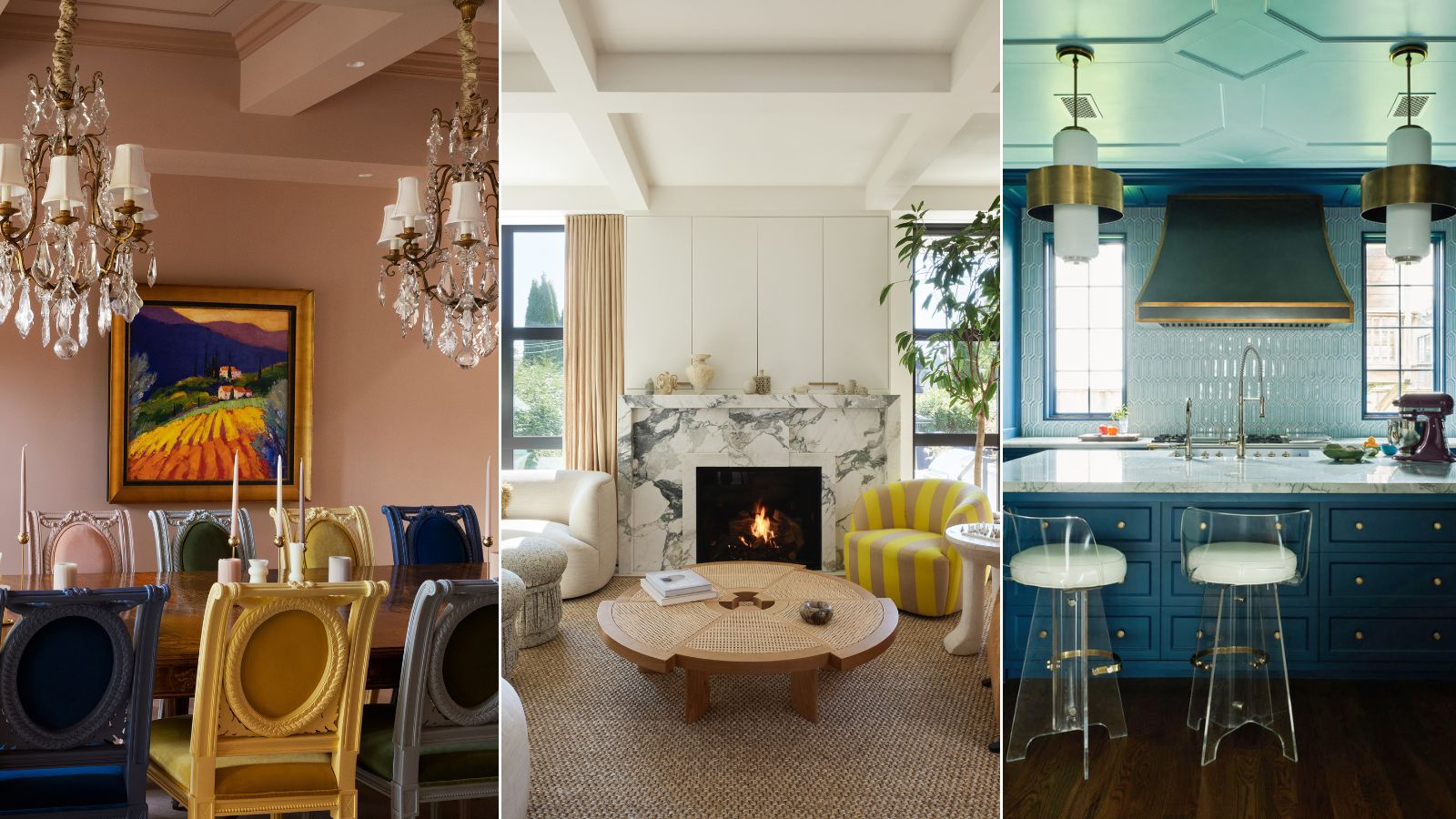
- 1. Work with what you've got and embrace the blank canvas
- 2. Fit a new fireplace – it's the ultimate focal point
- 3. Think about ceilings, moldings and millwork
- 4. Consider a transitional scheme
- 5. Create interesting archways and openings to link or divide spaces
- 6. Make good use of soft furnishings and window treatments
- 7. Have an eye for the small details
- 8. Discover how furniture and decorative objects can bring a space to life
- 9. Use color, decor and light to inject character

Anyone who's moved straight in to a newly built home will know the feeling well. I'm talking about that empty feeling: bare walls, stark windows and no sense of a focal point in the house design.
It's the same when you're renovating a space where all the original features have been stripped out, until you start to restore some interesting details and pull the interior design together there'll always be a sense that something's missing. Adding in detailing may repay you in other ways too, since there are some architectural features that add value to a home as well as enhancing the aesthetics.
So where do you start? How can you add architectural charm to a room that doesn't have any? We asked interior designers to share their tips on how to inject character into a featureless space and, ranging from quick fixes to minor construction work, their stylish ideas will make a world of difference.
How do you add architectural charm to a room that doesn’t have any?
The starting point for this challenge is to establish what's missing from the room. If the room is completely devoid of all architectural details, then the features that will be most obviously absent are things like the fireplace, decorative moldings, trim, millwork and perhaps built-in cabinetry. Besides adding these structural details there are many other quick fixes that will help to give the room some more interesting focal points.
Check out our interior designers' bright ideas for structural changes and minor decorative additions below.
1. Work with what you've got and embrace the blank canvas
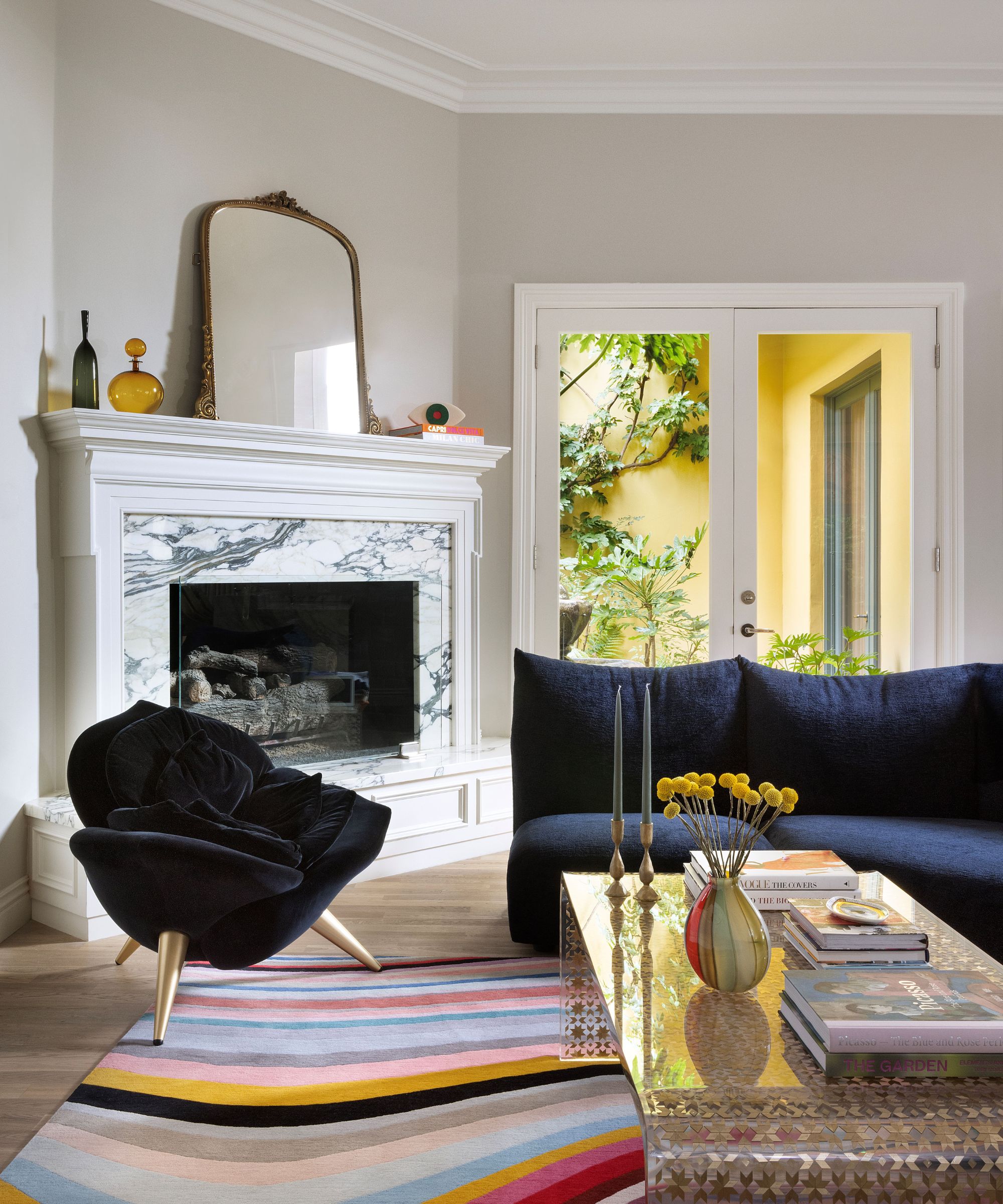
Start by taking a close look at the room you want to improve. Even the most bland, empty space will have one or two redeeming features if you look hard enough. Now that might simply be the fact that the room's a total blank canvas, or that the walls are smooth and ready to wallpaper or paint, but these are all good starting points and can save you time and effort as you start to layer up wall decor ideas and decorative details.
LA-based interior designer Tancred Vilucchi of Maison Vilucchi is a great believer in working with what you've got, saying, 'Pay lots of attention to the existing space. there are numerous details, items that can be used or repurposed to add charm and character to a room. The existing features from architectural to decorative details and materials are often overlooked, and there are plenty of options to use them and arouse interest. Simply adding a different type of finish, or mixing traditional with modern results in elevating the overall atmosphere and creating charm in a room that doesn’t have any.'
Design expertise in your inbox – from inspiring decorating ideas and beautiful celebrity homes to practical gardening advice and shopping round-ups.
In the Maison Vilucchi designed family room, pictured above, designer Tancred made the most of the unusual, if a little plain, architecture of the space. A newly fitted fireplace (more on this below) makes the most of an awkward angular wall, while a bright striped rug adds a sense of fun.
2. Fit a new fireplace – it's the ultimate focal point
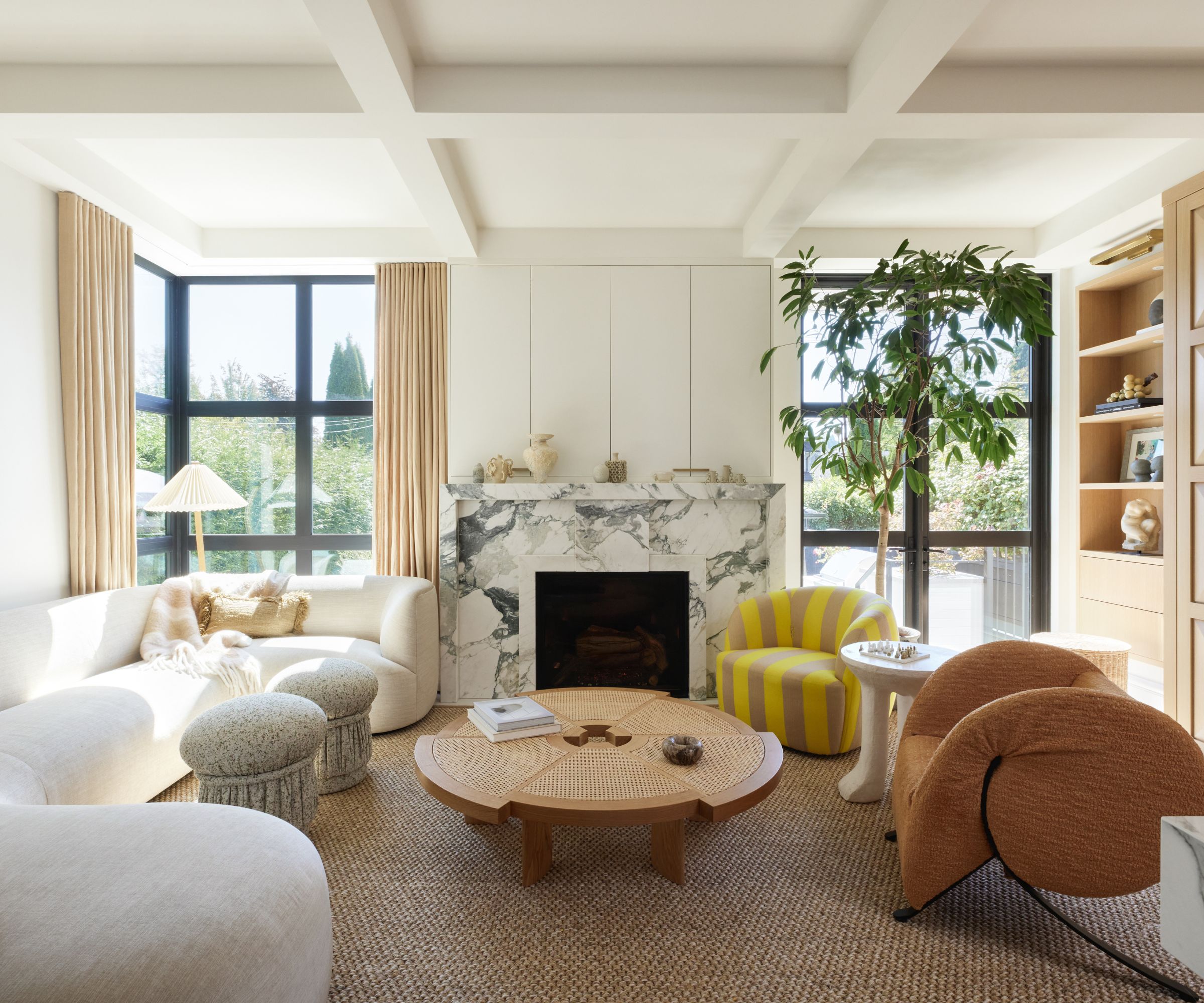
If there's one architectural detail above all others that can make or break a room scheme, it's a fireplace.
In a newly constructed home with no fireplace, or an older property where the original one has been removed, fitting a traditional or contemporary fireplace and surround will instantly give the room personality. You'll need to look into whether you can add a working fireplace and have it fitted by experts, particularly if it involves installing or repairing a flue. However, these additional costs will be well worth the outlay since the gain in architectural charm will be off the scale.
Vancouver designer Gillian Segal designed the mantel, pictured above, from 22 cuts of marble. 'It's a focal point straight from when you open the front door,' she says of the stylish addition to her newly built home.
It doesn't have to be a fireplace – other focal points are available. The important thing is to have something to draw the eye into the room.
'Ensure that the room has at least one impressive focal point,' agrees Vancouver-based interior designer Erica Colpitts. 'And create a single view that draws all elements together into an artful arrangement. If your space is bland and lacking in design interest, consider how you could ground the space by adding a stunning fireplace surround, a beautifully detailed custom extractor hood, or a sizable piece of millwork or specialty cabinet. Focal points provide a context for all design elements within the space and allow our eye to rest in a moment of completion. They help us make sense of a space, and I think rooms that make design sense are rarely bland.'
3. Think about ceilings, moldings and millwork
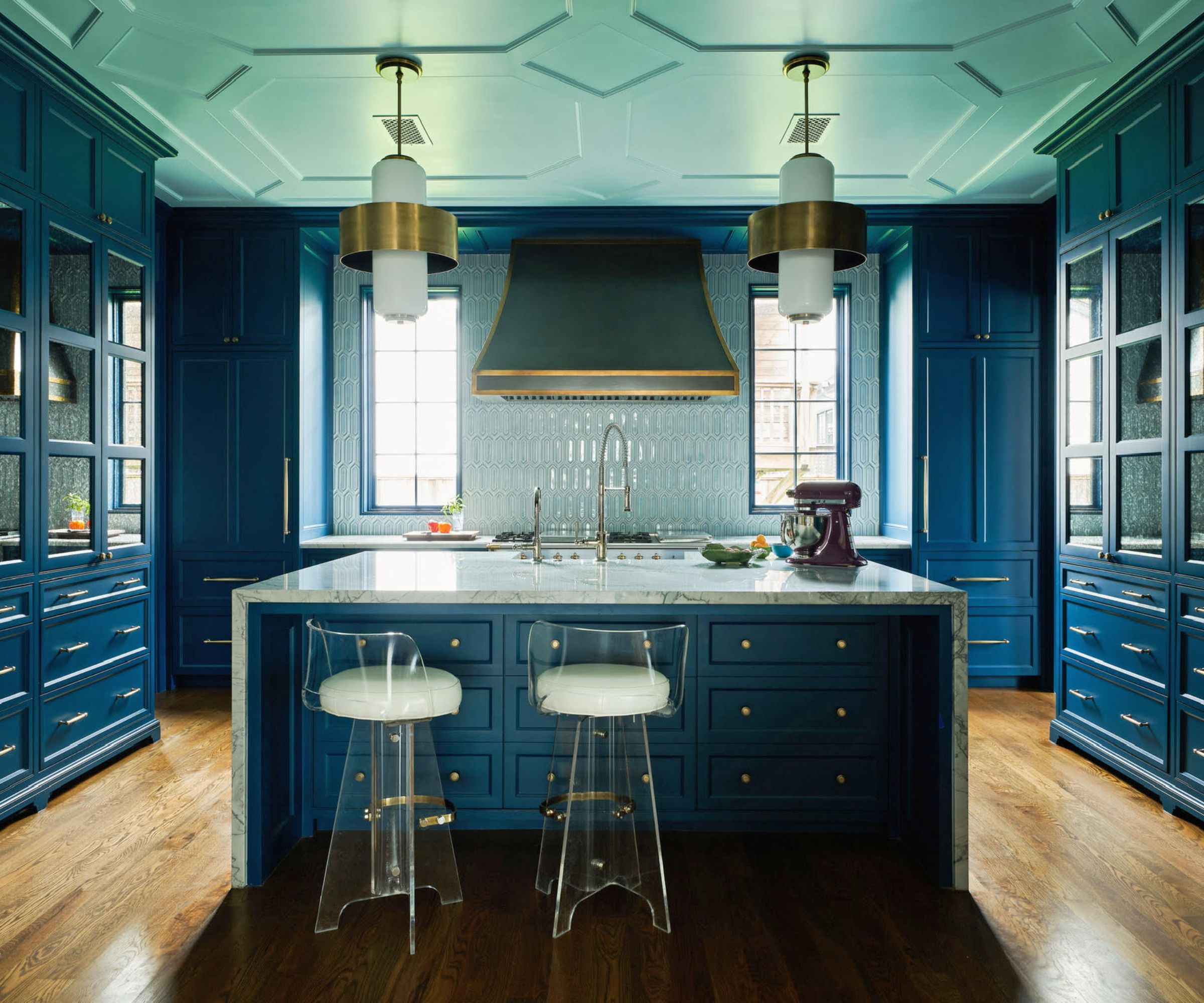
There's a good reason why moldings and ornate plasterwork were standard features in historic houses – they give the room a decorative framework, defining the space and enhancing the proportions of each room.
Architect Nadia Palacios transformed a neutral kitchen, introducing strong ceiling detailing, pictured above. The striking dark blue lacquer chosen for the cabinetry, draws the eye to the ceiling. 'A ceiling design adds interest and scale to a room,' says Nadia. 'Ceilings are often overlooked, which is a shame because they can provide a continuation to the architecture of the walls. I don’t think modern features are as effective as traditional details in giving scale and proportion to a room.'
What's more, according to interior designer Lauren Lerner of Living with Lolo, moldings and trims like these can be easy wins. 'To transform a plain room into a visually appealing space, consider adding molding, ceiling trim, wainscoting, bead board, beams, or built-in shelving,' she says. 'These additionas can instantly enhance the architectural appeal of a room. Crown molding, baseboards, and chair rails work wonders in elevating plain walls, infusing them with depth, character, and a sophisticated finish. These features are simple to install yet have a profound impact on a space, enhancing its aesthetic with a refined and bespoke touch almost instantly.'
Interior designer Vani Sayeed agrees, 'Adding crown molding, cased openings, and 5.5-inch baseboards are my go-to additions. In fact, fitting any trim adds elegance and a definition to a room,' she says.
4. Consider a transitional scheme
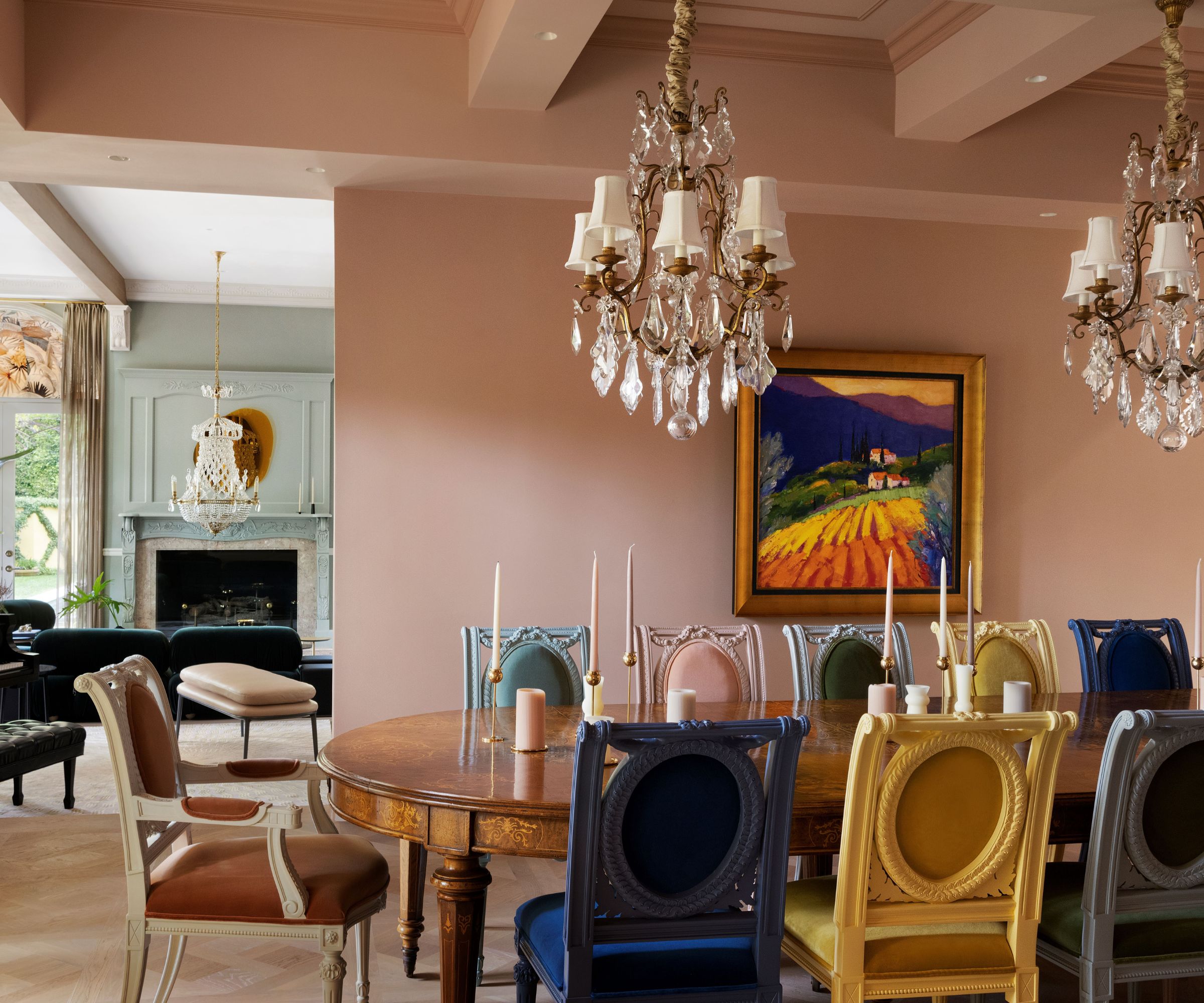
One tried and tested way to introduce personality to an empty, characterless space is to use transitional design. By combining old and new pieces to create one elegant design scheme you can bridge the gap between a featureless contemporary space and a more storied traditional look.
This could include adding in large scale traditional architectural features, such as a period-style fireplace or wainscoting, or it might simply be a case of incorporating antique furniture alongside contemporary pieces. Think vintage chandelier over a modern dining table. But whether you choose a structural, architectural approach to transitional design or take a decorative approach, the design experts agree that mixing old and new is a great way to bring character to a bland room.
'Sometimes the most impressive statement can be the addition of a modern feature in a period context, allowing the simplicity of the modern piece to truly shine,' says Erica Colpitts. 'The overall design aesthetic of the space might lean more traditional, but by including a piece with modern lines and proportions its simplicity becomes very striking in the context of a more classically detailed and accessorized space.'
Tancred is a big fan of transitional design to create storied interiors, as demonstrated above in his dining room scheme for an LA home. 'We aim to combine period architectural features that have different styles and provenance to create a charming atmosphere; which can be appreciated or interpreted in different ways from first sight,' he says. 'This is how we create stories through design, and eventually they become talking points.'
We've talked a fair bit about introducing period features, but can modern architectural features be effective at introducing character?
Lauren Lerner says yes. 'Modern architectural features can rival period elements in enhancing a space by harmonizing with its design,' says the designer. 'Clean lines, open layouts, and expansive windows create an airy, bright ambiance. Materials like steel, glass, and concrete offer creative textures. Contemporary elements like built-in furniture and modern lighting add a stylish touch, while geometric patterns and frameless doors enhance the aesthetic.'
5. Create interesting archways and openings to link or divide spaces
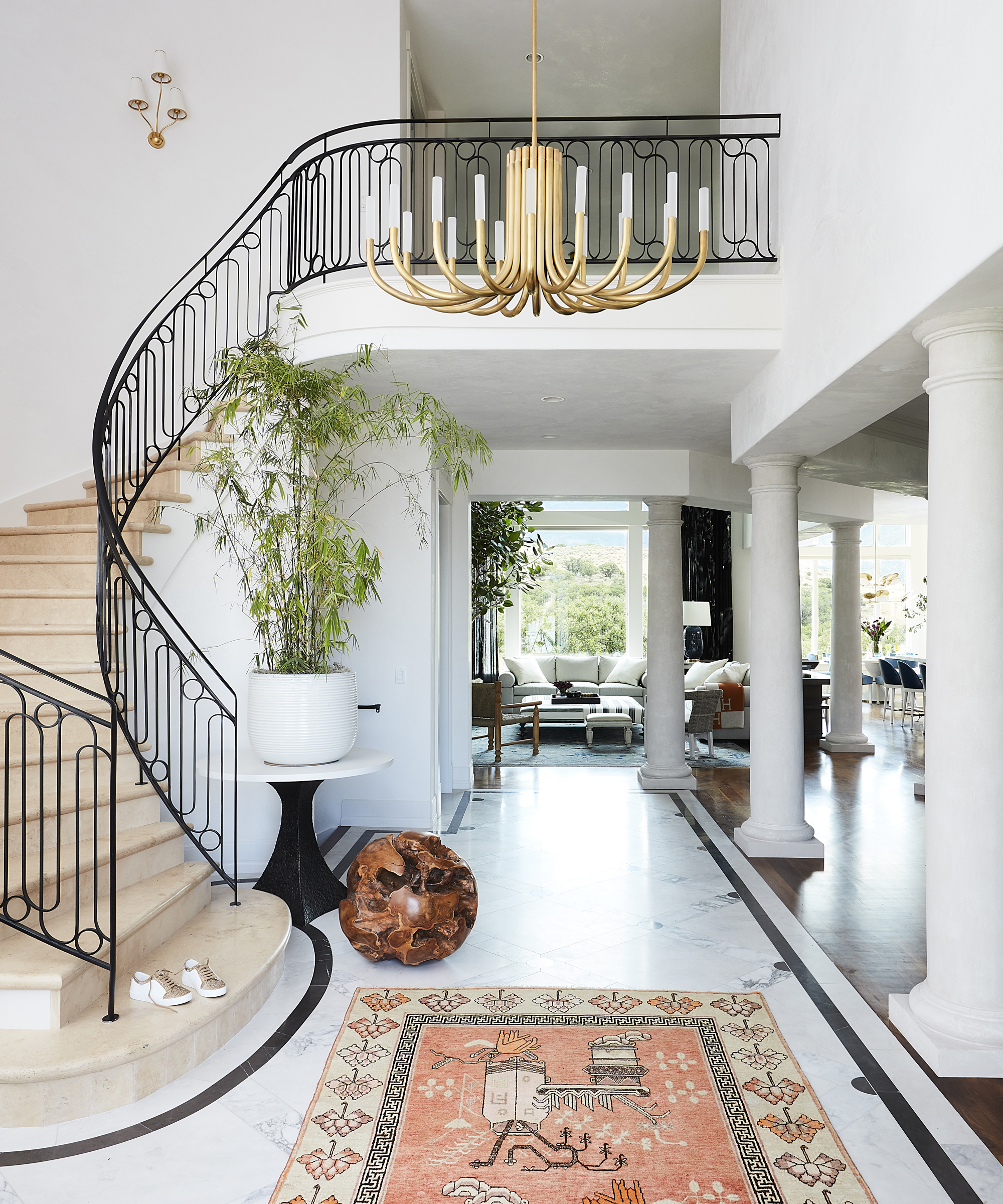
Another technique that works well in a space devoid of architectural charm is to create a new vista using doorways, arched openings or columns, as in the sumptuous Salt Lake City home, above, designed by Alice Lane Interior Design. The theory is that by interrupting the line of sight in a boring, empty space you entice the eye to explore beyond what it can see. It's rather like dividing up a garden with a hedge or wall, leaving an opening to provide a look-through and access into the space beyond. In a room the division needn't be a permanent structure, a similar effect can be achieved with strategically placed double-sided shelving.
Fitore Syla, who co-founded Muza interior design studio in Pristina, Kosovo, will often divide a room up like this to create an element of surprise. 'Regardless of the room's size, I like to create an artistic division between different areas,' she says. 'For example, I might use an open door with an arched or irregular shape to separate a bedroom and a wardrobe. In a living room and reading space, I might use an archway, a wooden divider, or another interesting element that maintains flow while adding a dynamic atmosphere. This adds depth and character to the space.'
6. Make good use of soft furnishings and window treatments
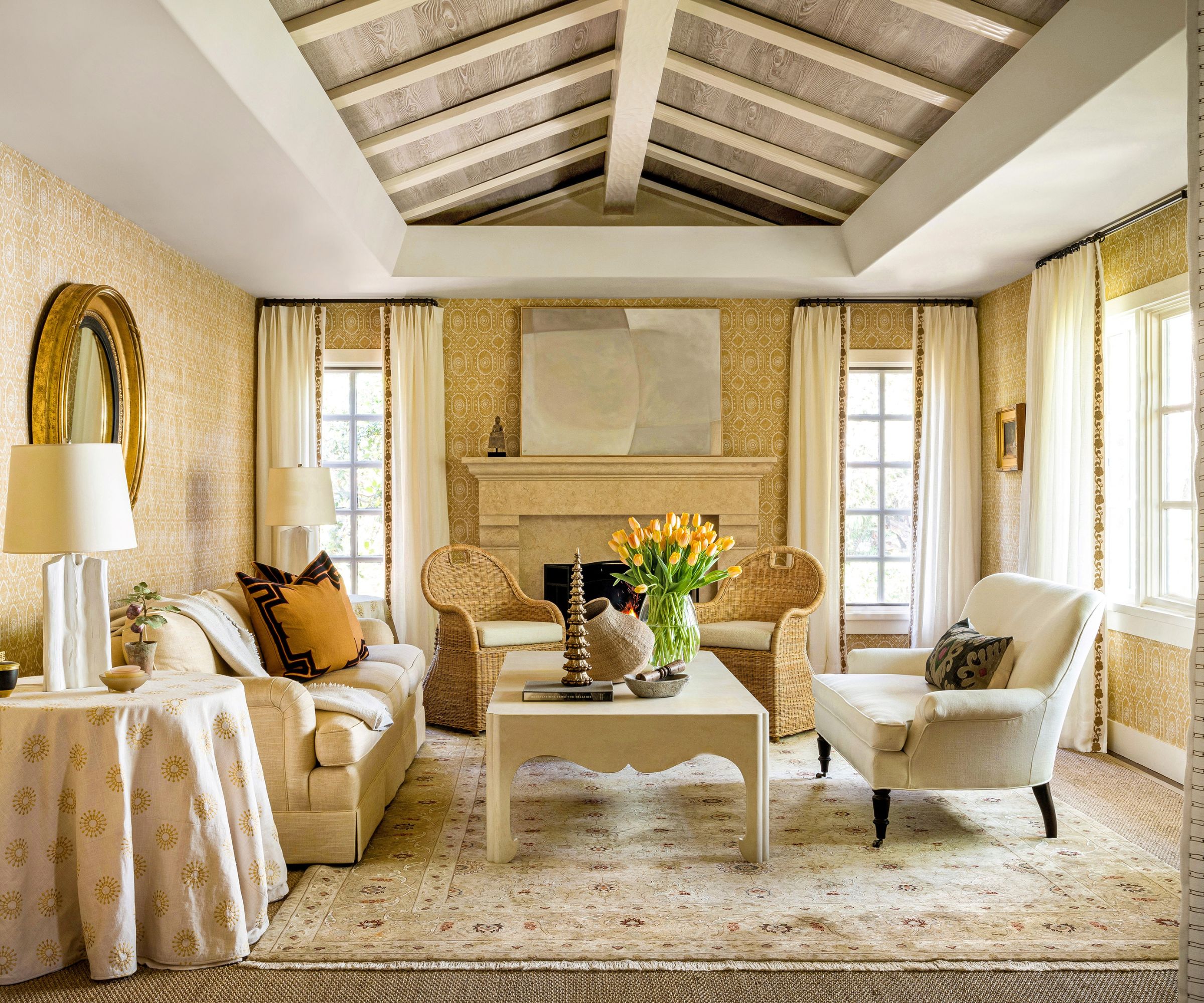
Building up an inviting room scheme from a blank canvas is all about adding layers of interest and beautiful features, but one element that is often forgotten is the window treatment. When you're trying to add architectural charm to a room that doesn't have any, sumptuous drapes are the way to go and choosing a rich fabric and pattern will all add to the illusion.
'People often don’t add soft window treatments like drapery,' says Vani Sayeed. 'They think just having privacy blinds are enough but drapes add softness, color and personality to a space.'
Pillows, table skirts and upholstery fabrics are equally important to the finished look. The 1980s California Wine Country home, pictured above, 'lacked soul and authenticity' according to designer Benjamin Dhong. He consciously layered in soft sheers and patterns, and even used fabric on the walls to give the space much-needed warmth and character.
7. Have an eye for the small details
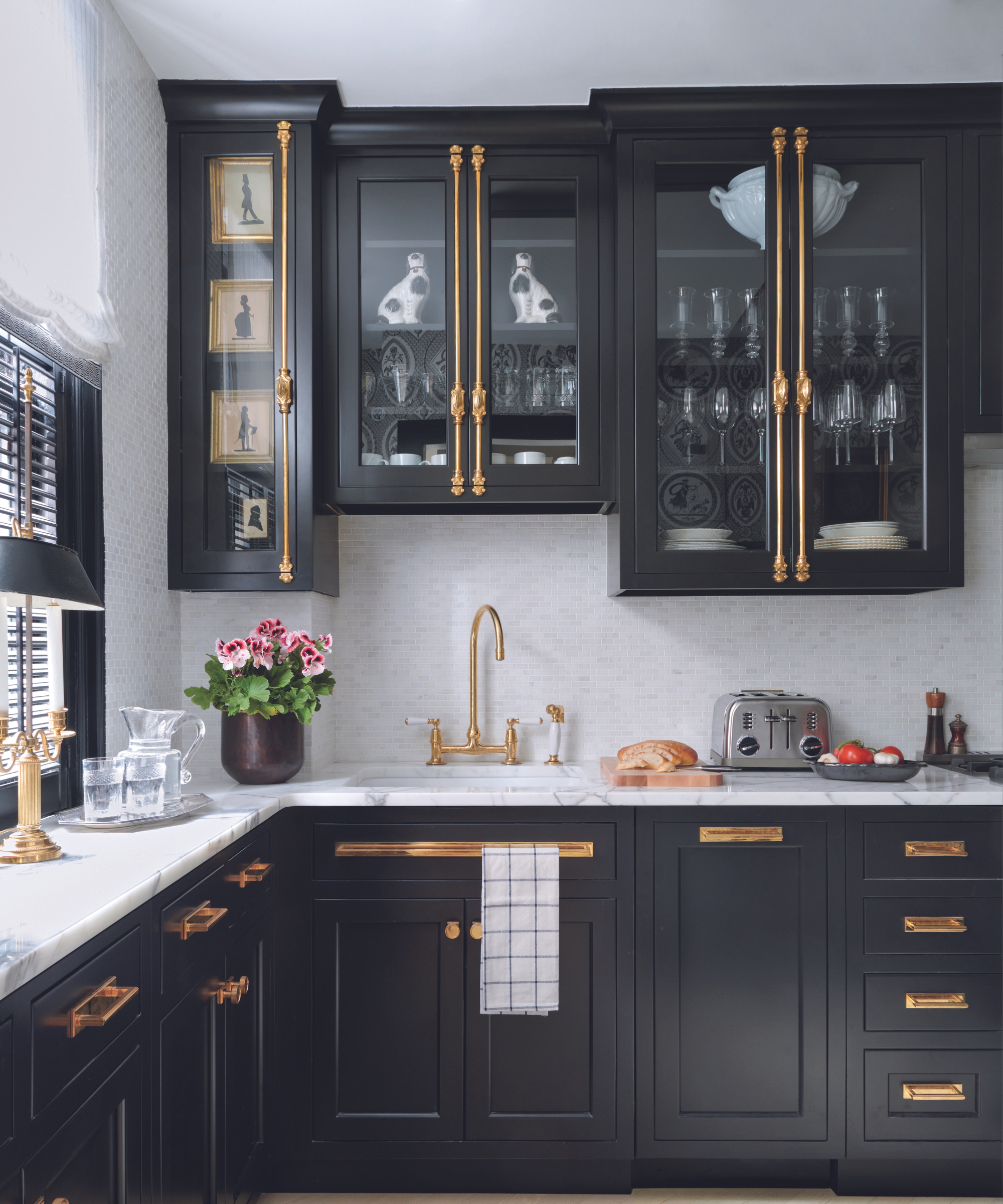
Many of the design experts we spoke to agreed that introducing well designed hardware can make all the difference to a featureless room. Switching out cabinet hinges and handles can really give your kitchen ideas a boost. Similarly, a bland bathroom can be transformed with quality faucets, and the whole house gets a glow up if you change all the doorknobs.
Tancred Vilucchi says: 'Hardware is also often overlooked, from door hinges to cabinet hardware, these features will all elevate the overall atmosphere. There is plenty of great hardware design on the market that will stand out once installed on a simple door. Refined hardware such as handles, or pulls and knobs is a must when adding architectural charm to a room.'
Erica Colpitts agrees, and emphasizes the importance of choosing something individually made. 'Adding something hand crafted makes an instant difference,' she says. 'We are such intuitive beings, and I think we can sense when something in a space has been crafted with care and has the marks of an artisan. We can add hand crafted items into a space in the larger architectural pieces (like the strapping and rivets on a hood fan, or hand made steel hinges and handles on a cabinet), as well as in the accessories we use as finishing touches (hand cast ceramics, and artisan wooden bowls and boards).'
8. Discover how furniture and decorative objects can bring a space to life
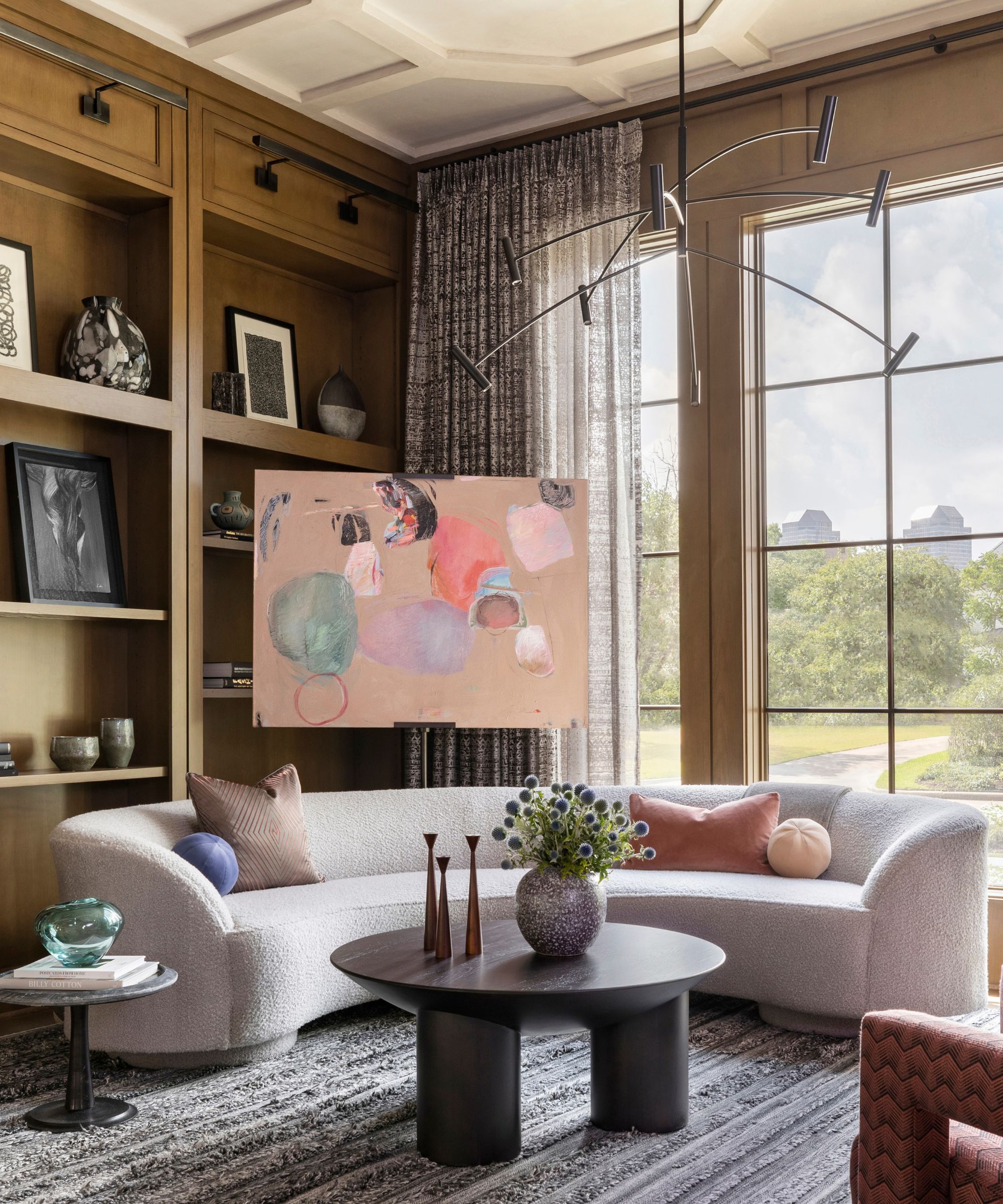
In a box-like room with few interesting features, choosing unusual furniture can help to bring the space to life. Designer Benjamin Johnston added ceiling moldings, and built-ins to this generous sized living room, where the only remarkable features were the huge windows.
He then turned his attention to the main pieces of furniture, choosing a striking curved sofa as his showstopper. 'Curvilinear furniture creates lines and dimensions where there previously were none,' he says. 'Paired with unique, decorative objects including pedestals, statues, sculptures, and vases of varying heights and scale, you can deliver an impactful dose of visual interest.'
Note the artwork displayed on an easel-type stand. This is another clever technique that can be used to break up a run of flat walls in an empty space, rather than hanging art on the flat walls.
9. Use color, decor and light to inject character
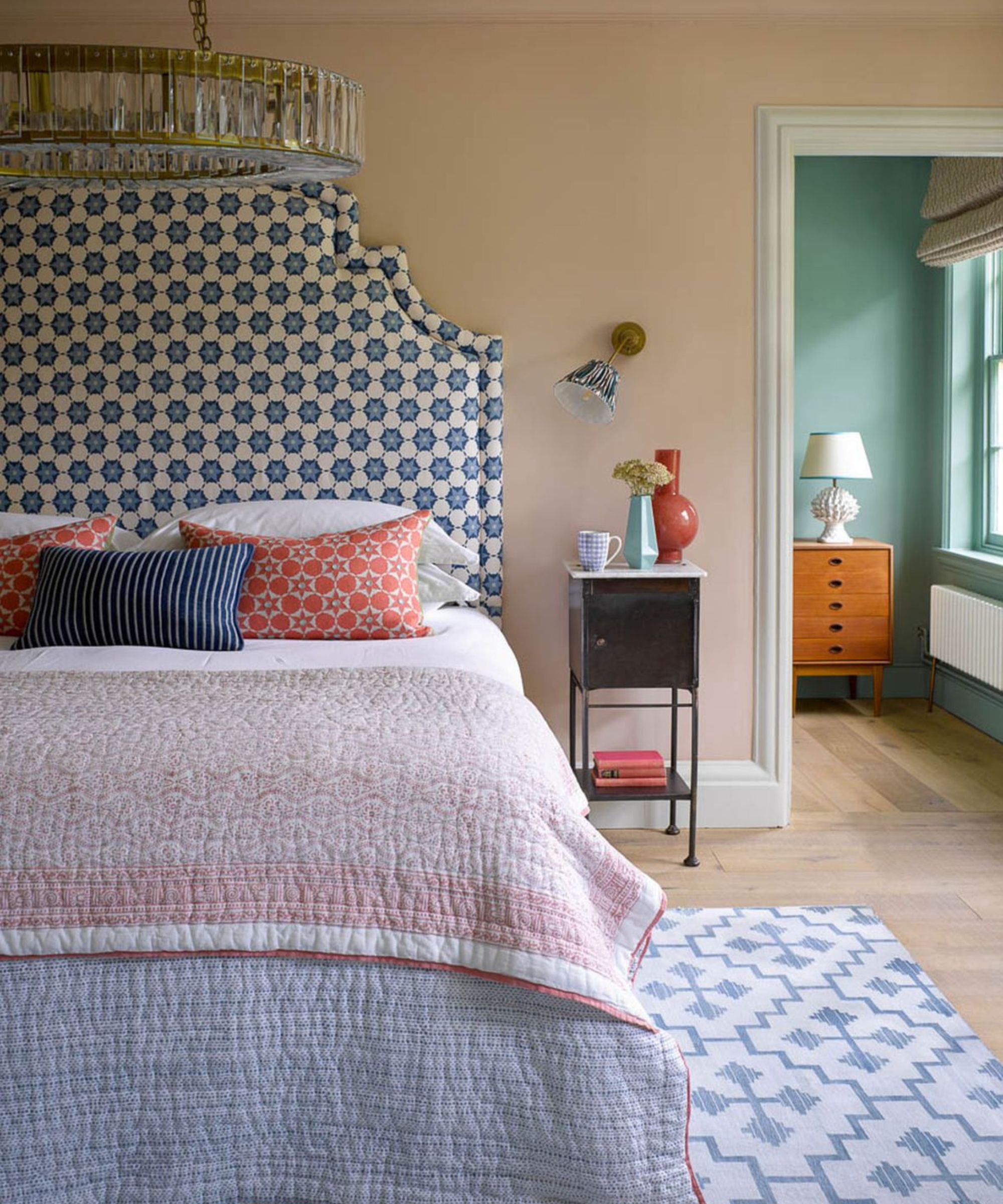
It's more important than ever to be creative with decor and lighting in a space with little or no architectural charm. Imaginative use of color can change the mood and energy of the room as well as enhancing newly integrated architectural features, while striking wallcoverings will help to give the room a more considered look.
'Working with color and integrating it into an interior is a challenging but rewarding task,' says Ksenia Mezentseva. 'Using color theory will help you to choose the right color to completely change the mood of the space. Integrating color to walls or ceiling can create a cozy and private feel to a smaller space or to expand it visually and make it fun.'
'Adding wallpaper that stands out from the décor and flows with the approved design theme, is the perfect way to create a story along with the decorative elements, turning them into talking pieces,' says Tancred Vilucchi. 'It is essential to create a flow with all the design elements from architectural details, to material and colors, textures, furniture, and accessories, to achieve visual unity and create harmony in the overall decorative concept.'
Well chosen and well placed lighting is an essential part of good interior design in any room and time and money spent getting lighting ideas right is always worth the investment. Lauren Lerner agrees: 'Lighting is an underestimated aspect in interiors, but statement fixtures like chandeliers or pendant lights can enhance a room's ambiance.' And for Fitore Syla, it's wall lights that make the difference 'I tend to find the most interesting wall lights' she says, 'focusing on them as unexpected features rather than just sources of light.'
A well lit room will combine ceiling lights, wall lights, table lamps and floor lamps to create layers and add depth to the scheme, combined with good color and decorative choices these are the perfect finishing touches to bring a blank space back to life and add charm to a room that doesn't have any notable architectural features.
Karen sources beautiful homes to feature on the Homes & Gardens website. She loves visiting historic houses in particular and working with photographers to capture all shapes and sizes of properties. Karen began her career as a sub-editor at Hi-Fi News and Record Review magazine. Her move to women’s magazines came soon after, in the shape of Living magazine, which covered cookery, fashion, beauty, homes and gardening. From Living Karen moved to Ideal Home magazine, where as deputy chief sub, then chief sub, she started to really take an interest in properties, architecture, interior design and gardening.
